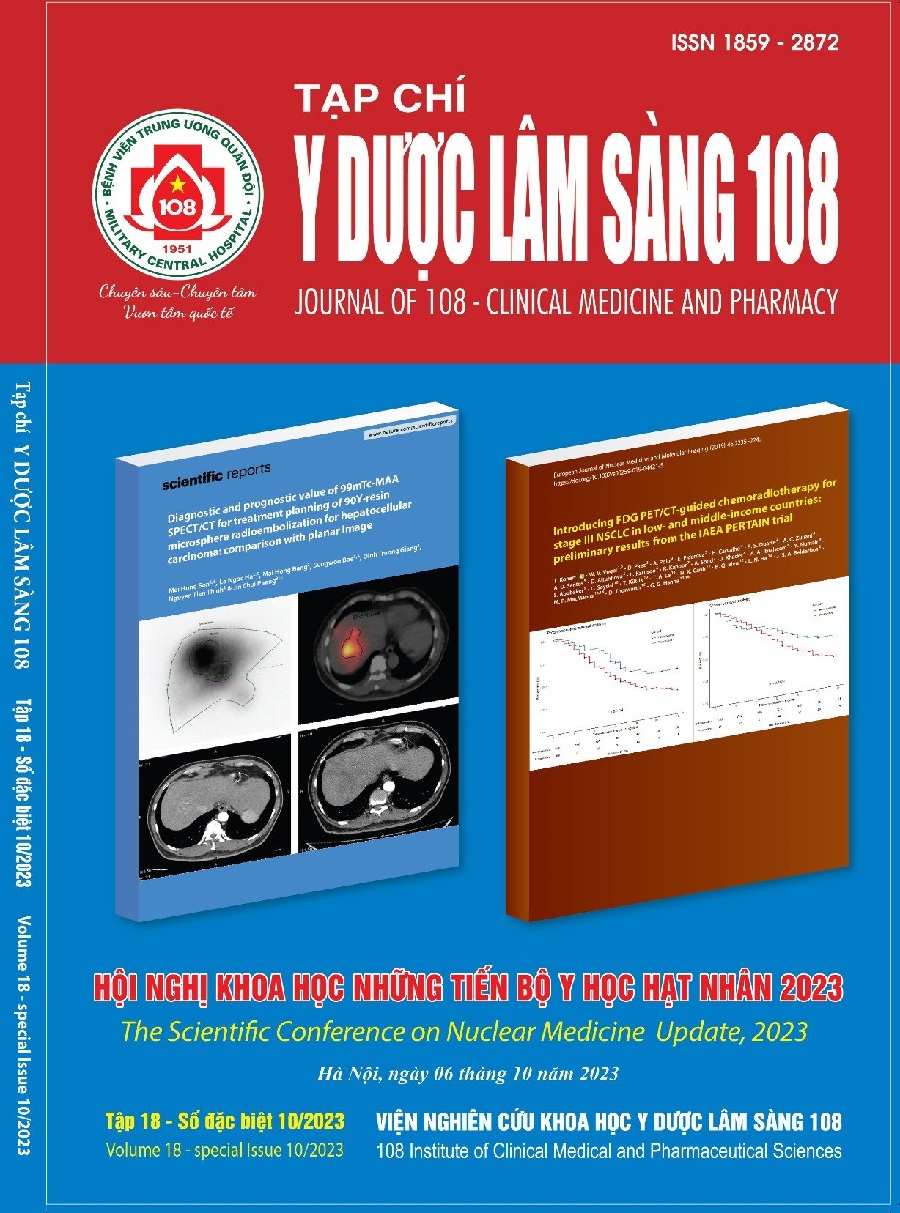Theranostic in nuclear medicine: Current status and perspectives
Main Article Content
Keywords
Abstract
The theranostic approach couples diagnostic imaging and therapy using the same molecular or at least very similar molecules. The imaging for detection of potential targets enable to not only diagnosis but predict if a patient will benefit from particular treatment. Theranostics in nuclear medicine refers to the use of radioactive compounds to image biologic phenomena radioactive compounds to image biologic phenomena by means of expression of specific disease targets and then to use specifically designed agents to deliver ionizing radiation to the tissues that express these targets. The nuclear theranostic approach has been increasing interest and gained importance in parallel to the growth in molecular imaging and personalized medicine, improving patient treatment selection, prediction of response and toxicity… in various malignant diseases. The paper provide an overview of theranostic approaches in nuclear medicine, starting with a review of the main concepts and the progress of theranostic agents since early applications and disscus the developments and future directions of theranostic.
Article Details
References
2. Gomes Marin JF, Nunes RF, Coutinho AM, Zaniboni EC, Costa LB, Barbosa FG, Queiroz MA, Cerri GG, Buchpiguel CA (2020) Theranostics in Nuclear Medicine: Emerging and re-emerging integrated imaging and therapies in the era of precision oncology. RadioGraphics 40: 1715-1740.
3. Tan HY, Yeong CH, Wong YH, McKenzie M, Kasbollah A, Md Shah MN, Perkins AC (2020) Neutron-activated theranostic radionuclides for nuclear medicine. Nuclear Medicine and Biology 90-91: 55-68.
4. Weber WA, Czernin J, Anderson CJ, Badawi RD, Barthel H, Bengel F, Bodei L, Buvat I, DiCarli M, Graham MM, Grimm J, Herrmann K, Kostakoglu L, Lewis JS, Mankoff DA, Peterson TE, Schelbert H, Schöder H, Siegel BA, Strauss HW (2020) The future of nuclear medicine, molecular imaging, and theranostics. The Journal of Nuclear Medicine 61; No. 12 (2): December 2020.
5. Heidegger I, Kesch C, Kretschmer A, Tsaur I, Ceci F, Valerio M, et al (2022) Biomarkers to personalize treatment with 177Lu-PSMA-617 in men with metastatic castration-resistant prostate cancer - a state of the art review. 14: 17588359221081922.
6. Hofman MS, Emmett L, Sandhu S, Iravani A, Joshua AM, Goh JC et al (2021) [(177)Lu]Lu-PSMA-617 versus cabazitaxel in patients with metastatic castration-resistant prostate cancer (TheraP): A randomised, open-label, phase 2 trial. Lancet (London, England) 397(10276): 797-804.
7. Ferraro DA, Garcia Schüler HI, Muehlematter UJ, Eberli D, Müller J, Müller A et al (2020) Impact of (68)Ga-PSMA-11 PET staging on clinical decision-making in patients with intermediate or high-risk prostate cancer. European journal of nuclear medicine and molecular imaging 47(3): 652-664.
8. Jadvar H, Calais J, Fanti S, Feng F, Greene KL, Gulley JL et al (2022) Appropriate Use Criteria for Prostate-Specific Membrane Antigen PET Imaging. Journal of nuclear medicine: Official publication, Society of Nuclear Medicine 63(1): 59-68.
9. Rohith G (2021) VISION trial: (177)Lu-PSMA-617 for progressive metastatic castration-resistant prostate cancer. Indian journal of urology: IJU: Journal of the Urological Society of India 37(4): 372-373.
 ISSN: 1859 - 2872
ISSN: 1859 - 2872
